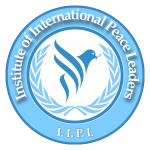The Effects of Physical Child Abuse on Mental Health in Pakistan
By Hareem Bilal and Dr. Austin Mardon
Around the world, child abuse has been recognized as a major social and
medical problem, affecting children from all racial, social and religious groups.
1 It is also one of the most despicable and shamefully existing human rights violations. 2 The World Health Organization (WHO) defines child abuse as “all forms of physical and/or emotional ill-treatment, sexual abuse, neglect or negligent treatment resulting in actual or potential harm to the child’s health, survival, development or dignity in the context of a relationship of responsibility, trust or power.” Unreported events make it difficult to measure the prevalence of child neglect and abuse. 3. Child abuse results from the environmental and social stresses according to the environmental stress theory model. Lower educational status, nuclear family structure, poverty and unemployment are examples of stressful life conditions and home environments, which are prominent factors of this model. This model suggests that stressful factors in family life and environment can facilitate violence.or interfere with the ability to care for a child in a parent. 4. It is reported that one billion children between the
ages of 2-17 experience some form of violence annually. 5. Pakistan is a developing country in South Asia with a per-capita gross national income of US$ 420 and a population of 153 million. 6. Although the high frequency of violence is under reported in Pakistan, there has been a substantial increase in reporting of violence to authorities recently. 7. Among adolescents residing in different peri-urban areas of Karachi (Pakistan), from over two years from 2015 to 2017, a prospective longitudinal study measured self-reported depressive symptoms and parent-to-child maltreatment. Findings suggested that 8.6% of occasionally maltreated adolescents and 10.96% frequently maltreated adolescents developed depressive symptoms. A 6.8% incidence of depressive symptoms was reported in another study conducted on more than 3000 maltreated Brazilian adolescents. Limited socialization, various culture norms and harsh disciplinary measures practiced by parents could be the possible risk in increasing depressive symptoms in the maltreated adolescents. Studies reveal that parents of abused children were more likely to be in an unhappy marriage or divorced. Children growing up in households where their mothers are victims of domestic violence were at a greater risk of being abused. Psychological morbidities and neurochemical changes might be the biologically plausible explanation for the association between interrupted emotional growth due to parent-to-child maltreatment and depressive symptoms.8
Child abuse prevention should be placed on the national agenda as it should be considered a matter of major public health concern. Multifaceted and integrated approaches to achieve the prevention of child abuse would require joint efforts by policy makers, the government, and public health practitioners. The first line doctors being the primary care physicians and well trained health care providers who provide care to victims of child abuse and domestic violence, preventing poor mental health outcomes.
Friendly services should be provided through a supportive network, which would require a capacity building in both the relevant professionals and authorities. It is crucial to
break the cycle of violence by addressing the violence against innocent children and reporting any maltreatment.9.
1.Ali et al., 2014
2. Child Abuse among Child Laborers in Pakistan: New Research Reveals a Critical
Situation for Minorities – Global Human Rights Defence, n.d.
3 Ali et al., 2014
4. Ali et al., 2014
5 Child Abuse among Child Laborers in Pakistan: New Research Reveals a Critical
Situation for Minorities – Global Human Rights Defence, n.d.
6 Violence against Children: A Challenge for Public Health in Pakistan – PMC, n.d.)
7 Child Abuse among Child Laborers in Pakistan: New Research Reveals a Critical
Situation for Minorities – Global Human Rights Defence, n.d.
8 Lakhdir et al., 2021
9 Lakhdir et al., 2021
References:
1. Ali, N. S., Ali, F. N., Khuwaja, A. K., & Nanji, K. (2014). Magnitude and Factors
Associated with Child Abuse in a Mega City of Developing Country Pakistan.
Iranian Journal of Pediatrics, 24(2), 140–146.
2. Child abuse among child laborers in Pakistan: New research reveals a critical
situation for minorities – Global Human Rights Defence. (n.d.). Retrieved April
15, 2022, from https://ghrd.org/child-abuse-among-child-laborers-in-pakistan/
3. Lakhdir, M. P. A., Akber Ali, N., Peerwani, G., Farooq, S., Khaliq, A., Nathwani, A.
A., & Azam, S. I. (2021). The role of parent-to-child maltreatment in the pathway
of self-reported depressive symptoms in Pakistani adolescents. Health
Psychology Open, 8(2), 20551029211065616.
https://doi.org/10.1177/20551029211065614
4. Violence against Children: A Challenge for Public Health in Pakistan—PMC.
(n.d.). Retrieved April 15, 2022, from
https://www.ncbi.nlm.nih.gov/pmc/articles/PMC2753994/
About Writers:
Hareem Bilal is a student in the Faculty of Science at Alberta University Canada. Austin Mardon, PhD, CM, FRSC, is an Adjunct Professor in the Faculty of Medicine and Dentistry at the University of Alberta.
